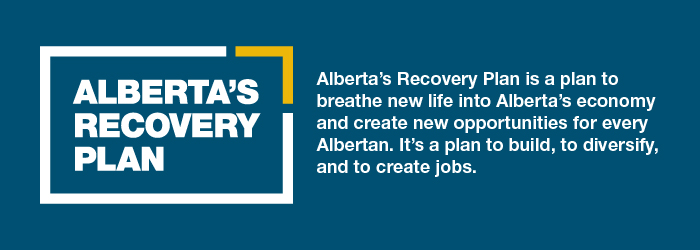The strategy, Renewing Alberta’s Mineral Future, will help capitalize on Alberta’s potential to become a preferred international producer and supplier of minerals and mineral products such as lithium, uranium, vanadium, rare earth elements, potash, and diamonds. Alberta has the opportunity to be a global leader in responsible next generation mineral exploration and development – an opportunity that exists because of the province’s wealth of natural resources and experienced workforce. The scope of the strategy does not include coal or surface materials such as sand and gravel.
Global demand for critical and rare earth minerals is rising. These resources are used worldwide to manufacture batteries, cell phones, energy storage cells for electric vehicles, and other products. Renewing Alberta’s Mineral Future – a key pillar of Alberta’s Recovery Plan – outlines a path to unlock Alberta’s untapped mineral resource potential, helping to meet increasing demand while creating jobs and attracting investment. In addition, the strategy and action plan encourages responsible and efficient exploration, development, manufacturing, and recycling of minerals and mineral products.
“Alberta can build on our long history of responsible resource development while helping to meet the world’s increasing demand for critical and rare earth minerals. These minerals are critical to supporting clean energy technologies and the shift towards a lower-carbon economy. Our mineral strategy and action plan will help grow and develop a strong minerals sector, while contributing to our province’s economic diversification and growth.”
The government has also introduced legislation to improve the regulatory environment, a key area identified in the strategy to support and achieve Alberta’s vision. If passed, the Mineral Resource Development Act will establish the Alberta Energy Regulator as the full lifecycle regulator for Alberta’s mineral resources. Regulatory oversight for minerals is currently split among multiple entities. A one-window approach will provide clarity and certainty for industry and investors, while protecting the best interests of Albertans by ensuring the safe, and responsible development of the province’s mineral resources.
The proposed legislation includes amendments to existing legislation that will help streamline and integrate the province’s mineral regulatory regime, provide regulatory clarity to project proponents and investors, and help build an attractive climate for investment and innovation.
“As global energy systems continue to evolve and decarbonize, critical and rare minerals are needed to advance our energy future: from titanium for wind turbines, to lithium for batteries, and much more. Alberta can be a meaningful global player with these important commodities if we act now to secure a foothold in the global market. A modern minerals strategy for responsible development will help diversify our economy, while expanding our natural resources industries in a low carbon future.”
“Alberta holds one of the world’s largest lithium resources. The new act, mineral strategy and action plan provides the foundation for a new industry built on decades of oil and gas knowledge and experience. E3 Metals aims to lead Canada in supplying responsibly produced lithium to empower a lower carbon future. We are grateful to the Government of Alberta for this important and timely action.”
Alberta’s strategy was developed in collaboration with the Mineral Advisory Council – which provided advice, guidance and recommendations – and with input from industry stakeholders and Indigenous organizations. The strategy also supports work with our federal, provincial and territorial partners – such as our cooperation with the Northwest Territories – on the Canadian Minerals and Metals Plan and the Canada-U.S. joint action plan on critical minerals collaboration.
Quick facts
- The World Bank has predicted a 500 per cent increase by 2050 in the production of minerals, such as graphite, lithium and cobalt, just to feed clean energy demand alone.
- Alberta has geological potential across the province for non-energy minerals, many of which have been identified as critical and strategic minerals – such as lithium in formation waters in west-central Alberta; vanadium, rare earth elements and titanium in oil sands waste streams; potash in eastern Alberta; and uranium in southern and northeastern Alberta.
- Alberta’s current non-energy mineral production comes primarily from approximately 20 active quarries producing salt, silica sand, limestone and other industrial minerals. There is a small amount of gold production reported as a by-product of sand and gravel operations.
